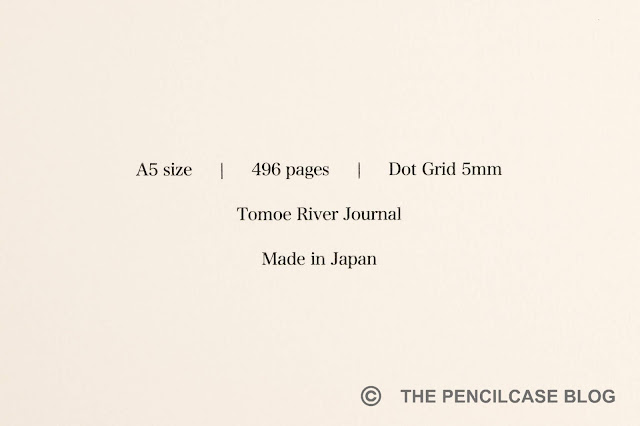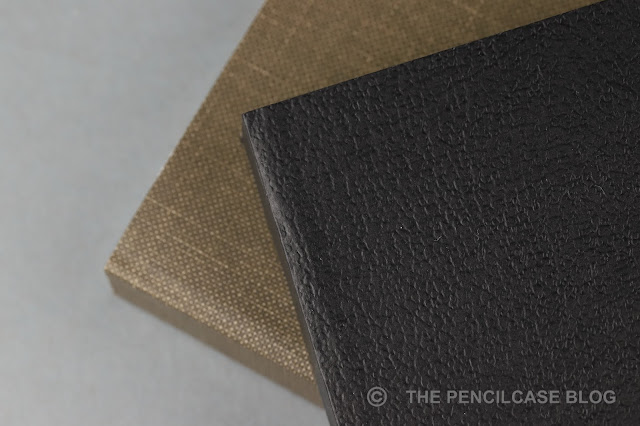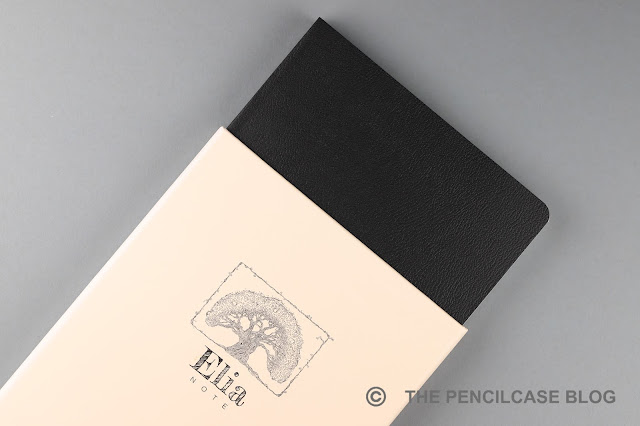At this point, it's almost impossible to imagine that there used to be a time when we didn't have - or at least, didn't know - Tomoe River paper. In less than a decade, it changed the way we look at fountain pen-friendly paper, it even changed how we use inks (and what properties we look for, in said inks!). It's safe to say that it's a pretty big deal for our writing community, and so in the last few years, we've seen numerous brands pop up left and right, dealing almost exclusively in the Japanese miracle paper. Where TR used to be Japan's hidden treasure, nowadays you shouldn't have to look too far to get your hands on some Tomoe, be it in loose sheets, pad, or notebook form.
But for this review, I did look a bit further... All the way to Malaysia even, where a young start-up notebook brand has its roots: Elia Note. Their brand is still only about two years old, but so far they remain based around one, simple product. And thus you'd be right to assume that it just HAS to be a good one.

With only a single notebook - The Elia Note Journal - in three variations (blank, lined, or dot grid), as well as an accompanying leather notebook cover, Elia Note keeps things simple and straightforward. You want a notebook, you get a notebook. The notebook itself follows the same minimalist mindset, with a design that's about as simple as it gets: A beefy softcover notebook in A5 size with a thin leatherette cover, unbranded on the outside, and precisely bound (Smyth-sewn, which means the spine is very flexible and the notebook can lay perfectly flat!) and precisely trimmed to give a clean and meticulous first impression.
 The notebook comes packaged in a sturdy cardboard sleeve which protects the notebook and is useful for archiving it once its full. It does lack the blotter sheet that comes included with some other Tomoe River notebooks, so if you're not a fan of watching ink dry, this might not be the notebook for you (although if you hate long dry times, TR is probably off the table altogether!).
The notebook comes packaged in a sturdy cardboard sleeve which protects the notebook and is useful for archiving it once its full. It does lack the blotter sheet that comes included with some other Tomoe River notebooks, so if you're not a fan of watching ink dry, this might not be the notebook for you (although if you hate long dry times, TR is probably off the table altogether!).
There are quite a few brands around the world (Nanami, Musubi, Galen Leather,...) that sell notebooks similar to the one Elia Note offers (I assume that most of them are even made by the same Japanese manufacturer), for good reason: The selling point of a journal like this is that you get an absurd amount of pages in a single notebook, showcasing perfectly what Tomoe River does best: super-thin paper that allows for lightweight and thin print work (TR was originally created for catalogs that needed to be light and thin enough to be sent by postal service!).
 While the Elia Note Journal is certainly a fairly thick boi, it's still relatively compact once you realize there are almost 500 pages inside (496 to be precise, roughly the equivalent of two 'normal' notebooks!). Of all the TR notebooks of this type that I own and could find online, the Elia Note has the absolute highest page count. Although the 16 pages difference with its closest competitor - the Nanami Seven Seas journal - is arguably not that significant, most other brands only come with 400 pages, yet they cost almost the same or more!
While the Elia Note Journal is certainly a fairly thick boi, it's still relatively compact once you realize there are almost 500 pages inside (496 to be precise, roughly the equivalent of two 'normal' notebooks!). Of all the TR notebooks of this type that I own and could find online, the Elia Note has the absolute highest page count. Although the 16 pages difference with its closest competitor - the Nanami Seven Seas journal - is arguably not that significant, most other brands only come with 400 pages, yet they cost almost the same or more!

 The combination of the soft, leatherette cover and the Smyth-sewn binding and a large number of signatures, makes that this journal stays open and closed when you want it to. The pages lay flat almost completely, and yet it's also quite flexible when you need it to be. This makes for a notebook that's easy to carry around and comfortable to write in - despite being rather thick.
The combination of the soft, leatherette cover and the Smyth-sewn binding and a large number of signatures, makes that this journal stays open and closed when you want it to. The pages lay flat almost completely, and yet it's also quite flexible when you need it to be. This makes for a notebook that's easy to carry around and comfortable to write in - despite being rather thick.
 As I said, there are a few brands that offer high page count Tomoe River notebooks in a similar format as this one, but the Elia Note Journal is the only one I know that offers my preferred ruling as standard: dot grid! Of all the inventive and - sometimes - quirky ruling types that exist nowadays, I still very much prefer dot grid as the most unobtrusive, yet effective method to keep my writing in check.
As I said, there are a few brands that offer high page count Tomoe River notebooks in a similar format as this one, but the Elia Note Journal is the only one I know that offers my preferred ruling as standard: dot grid! Of all the inventive and - sometimes - quirky ruling types that exist nowadays, I still very much prefer dot grid as the most unobtrusive, yet effective method to keep my writing in check.
 With 496 pages of 52gsm Tomoe River paper, you're set for quite a while (although the blank page syndrome may be extra daunting, with that many pages to fill!). I feel like a lot of new notebook brands these days tend to go for the slightly heavier 68gsm version, which - realistically - has the upper hand in terms of bleedthrough and showthrough, and the paper is a bit more practical to handle.
With 496 pages of 52gsm Tomoe River paper, you're set for quite a while (although the blank page syndrome may be extra daunting, with that many pages to fill!). I feel like a lot of new notebook brands these days tend to go for the slightly heavier 68gsm version, which - realistically - has the upper hand in terms of bleedthrough and showthrough, and the paper is a bit more practical to handle.

 Is there even really a need for super-lightweight paper in a notebook like this? Probably not. But the 52gsm paper does undoubtedly remains the king in terms of writing fun. It's super smooth (smoother than the 68gsm?), and it's unmatched in terms of how it renders fountain pen ink and brings out all kinds of hues, shading, and sheen that you simply don't get with other paper. The fact that it's frail and crinkly makes it all the more charming. Ah yes, I think I could rave on for hours about Tomoe River!
Is there even really a need for super-lightweight paper in a notebook like this? Probably not. But the 52gsm paper does undoubtedly remains the king in terms of writing fun. It's super smooth (smoother than the 68gsm?), and it's unmatched in terms of how it renders fountain pen ink and brings out all kinds of hues, shading, and sheen that you simply don't get with other paper. The fact that it's frail and crinkly makes it all the more charming. Ah yes, I think I could rave on for hours about Tomoe River!
 The Elia Note Journal is priced at 24€ / 27$. While that's slightly more than your average notebook, keep in mind that you get twice the number of pages, so in terms of absolute cost per page, I can't complain. As I said, there are a couple brands that offer notebooks like this, but the Elia Note journal stands out for its dot grid ruling option and its incredibly high page count.
The Elia Note Journal is priced at 24€ / 27$. While that's slightly more than your average notebook, keep in mind that you get twice the number of pages, so in terms of absolute cost per page, I can't complain. As I said, there are a couple brands that offer notebooks like this, but the Elia Note journal stands out for its dot grid ruling option and its incredibly high page count.
NOTE: This product was provided by Elia Note, so I could write this review. I was in no way influenced in the making of this review, the opinions shared in this review are completely my own! This post does not contain affiliate links.

 |
| The same, but different: the coated linen cover from the Nanami Seven Seas journal looks and feels quite different from Elia Note's leatherette cover material |








NOTE: This product was provided by Elia Note, so I could write this review. I was in no way influenced in the making of this review, the opinions shared in this review are completely my own! This post does not contain affiliate links.




No comments:
Post a Comment